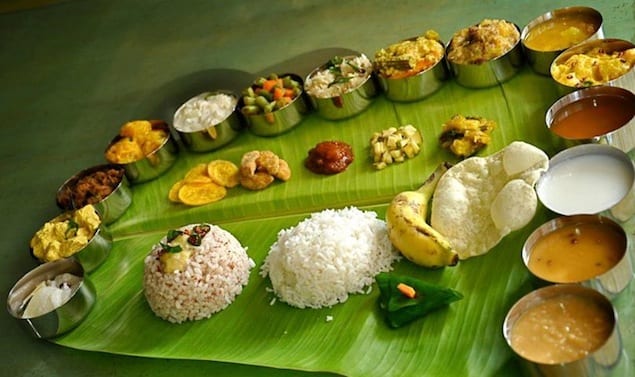Eating without utensils goes hand-in-hand with warmer weather: barbecues, street food, and county fairs. In parts of the world, enjoying meals purely with the hands is a traditional way of life. Today, acclaimed chefs are using this fork-less technique to encourage diners to reconnect with what is on their plate.
By Annelise McAuliffe

As warm weather pokes through our winter haze we no longer have to imagine watermelon juice dripping down our chin, sticky ice cream fingers, or barbecue stains on all of the napkins. One of the simple pleasures of the season is being able to forgo the forks and eat with our very own hands. Street food, baseball games, and county fairs have always been the biggest proponents for utensil free food, but eating with our hands goes beyond such seasonal activities and can even change a diner’s experience.

Millions of diners around the world eat solely with their hands on a daily basis. A tradition of many Eastern cultures, prevalent especially in India, eating without utensils is a familiar ceremony. Hand-washing becomes the ritual prelude to meals and a time to slow down in preparation for the sacred act of filling the body with sustenance. Not to mention, accomplishing the feat of eating rice, tandoori, and various accompaniments requires practice, reverence for food, and daft fingertips. From a young age, children are taught how to eat using only the fingertips of their right hand. Chef Hemant Mathur, of the Michelin-starred New York City restaurant, Tulsi, is known to encourage his patrons to enjoy his unique, regional Indian dishes with their bare hands.

These Indian traditions are also supported in the ancient Vedic texts. The hands are thought of as a holy part of the body, necessary for meditation. In the act of eating, using your hands allows the body to connect directly with the food and is believed to stimulate the digestive process. Because the finger tips physically connect with the characteristics of the food, diners are more aware of their consumption. Being less mechanical, individuals who eat with their hands are less likely to over indulge.
For those eaters who grew up learning the Western etiquette of keeping the fork properly positioned in the left hand and the knife gripped with the right, eating only with the hands is a foreign and sometimes uncomfortable experience.

The fork was the last utensil to make it to the table, behind the knife and spoon. Western Europe was exposed to the utensil by a Byzantine princess. While attending a banquet, she revealed her eating tool and actually frightened her uninformed, Western guests. A clergy member of Venice even condemned her for using the man-made for instead of her fingers that God had already provided her with. However, the tool soon became widespread, especially in cultures such as Italy who’s pasta cuisine demanded a more efficient eating tool.
Today, regardless of the country of origin, most food enthusiasts are comfortable wielding chopsticks, straws, sporks, or a knife and fork. However, besides the casual street food or sporting event, most Western eaters are terrified to use their own digits to dig in.
Why is that? Acclaimed chef and leader of the modernist cuisine world, Grant Achatz, continually pushes his customers’ comfort zones. Often times, dishes are presented directly on the surface of the table or on a structure other than a plate. Without silverware, guests are encourage to enjoy the food as is and often in one whole bite.

To some, this may seem like an exciting avenue to experience out-of-the-ordinary food, but to others, such a set-up forces them to pause and regain their dining composure. Is that Grant’s purpose? By presenting food that requires the typical diner to set aside what they are accustomed to, Chef Achatz demands their attention to focus solely on his creations. It is unlikely that casual conversation across the table will occur when the individuals must stop and rethink their consumption strategy. In an artful way, Grant has demanded and gained the attention of his customers by startling them.
At times, eating with our hands can cause disgust and discomfort, but in other situations we are catapulted back to our childhood and a feeling of simple calm and satisfaction arrives. Could putting our forks to the side be the new way to reconnect with our cuisine? From farm-to-table to focusing on the fare in front of us with our own fingers, we are more likely to consume in a responsible and healthful manner if all areas of our body are engaged in the eating process.





















